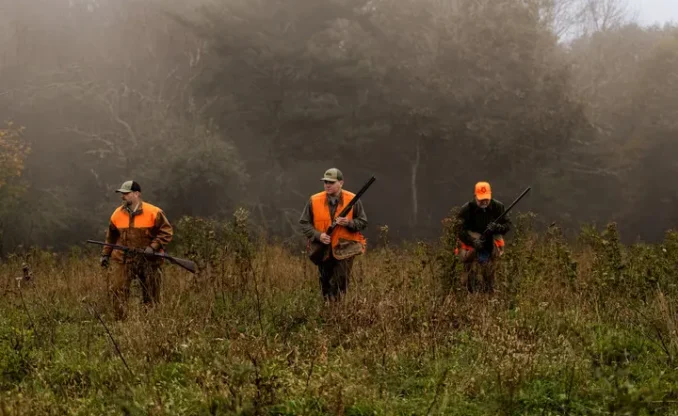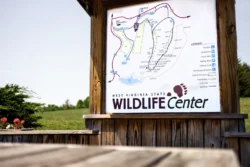Good Food and Cover
American Hazelnut – Corylus americana
Beaked Hazelnut – C. cornuta
Form
American – Shrub to 9 feet tall.
Beaked – Shrub 3 to 9 feet tall.
Bark and Twigs
American- Young shoots and twigs are bristly with stiff hairs that fall off after the first year.
Beaked – Twigs smooth, not glandular-bristly.
Leaves
In general are simple, alternate, deciduous.
American-Ovate 3 to 6 inches long, toothed margin, autumn color yellow.
Beaked-Oval and pointed at the tip, 2 to 4 inches long, toothed margin, autumn color yellow.
Flowers
Inconspicuous
Fruit
American-September-October, round thin-shelled brown nut ½ inch in diameter and enclosed in a cut toothed leafy husk.
Beaked- September, similar to American but leafy husks form a long beak-like protrusion which gives the plant its common name.
West Virginia Range
American-Throughout the state.
Beaked-Locally frequent throughout the state but less common than American.
Natural Habitat
American-Thickets and along roadbanks in well-drained loamy or gravelly soil.
Beaked-Rich thickets, clearings and borders of wood.
Wildlife Uses
Buds and twigs are browsed by deer. Nuts eaten by squirrels, chipmunks, bluejays, grouse, quail, pheasants, deer and probably other animals.
Horticulture
Uses: Informal uses or naturalizing and clumps.
Light: Partial shade to full sun.
Soil Moisture: Dry to moist.
Soil pH: Acid to neutral.
Problems: Must be pruned to maintain a respectable form.
Compiled by: Joseph Glencoe, Professor of Biology, West Virginia Wesleyan College , Buckhannon , West Virginia (now deceased)
Written by West Virginia Native Plant Society members and jointly published with the WV Wildlife Diversity Program.



